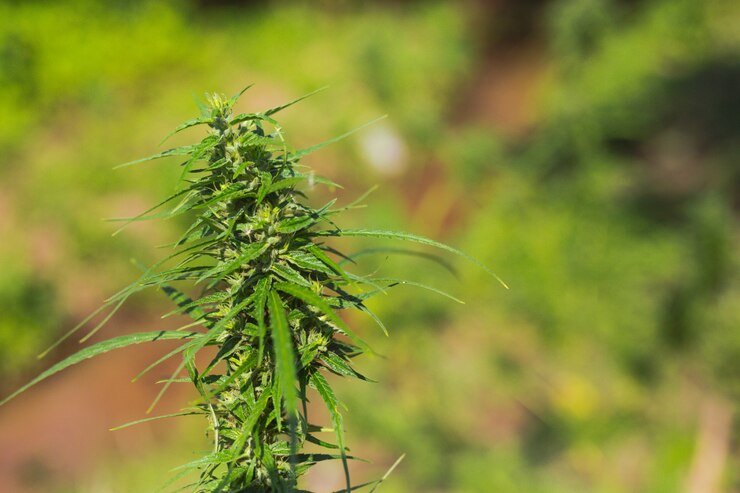The marijuana plant has been revered for centuries, prized for its medicinal and recreational properties. As cannabis legalization spreads across the globe, more people are gaining access to this once-taboo plant and learning about its benefits.
But have you ever wondered about the life cycle of the marijuana plant or how it grows? Understanding this can help you appreciate the care and expertise that goes into producing high-quality cannabis.
Whether you’re a seasoned grower or someone who buys from the best cannabis store Halifax, this guide will walk you through the stages of the marijuana plant’s life cycle.
Germination: The Beginning of Life
Every marijuana plant begins its journey as a small seed. When the right conditions are met—specifically moisture, warmth, and darkness—the seed cracks open and a tiny root emerges. This process is called germination, and it typically takes about 3-7 days.
The root then digs down into the soil, seeking out nutrients and water, while the first leaves, known as cotyledons, push through the surface to begin photosynthesis.
For new growers, germination is a critical step. It’s essential to choose the right environment for this stage, as the seed needs warmth and humidity to thrive.
Many growers use simple methods like the paper towel technique, where the seeds are placed between damp paper towels and stored in a dark, warm space until they sprout. After this, they can be transferred to soil or another growing medium.
Seedling Stage: The First Leaves Appear
Once the seed has germinated, the marijuana plant enters the seedling stage, which lasts for about 2-3 weeks. At this point, the plant begins to grow its first true leaves, characterized by their serrated edges. During this stage, the marijuana plant is delicate and requires special care. It needs lots of light—usually about 18-24 hours per day—to develop a strong root system.
Marijuana seedlings are also highly sensitive to overwatering and nutrient deficiencies. They thrive in moist, well-draining soil, and it’s essential to monitor the water intake carefully. If you’re growing marijuana indoors, this stage is where your plant starts to take shape, and setting up proper lighting and ventilation systems will be crucial to its success.
Vegetative Stage: Rapid Growth
The vegetative stage is where the marijuana plant really starts to grow. Lasting anywhere from 3 to 16 weeks depending on the strain and growing conditions, this phase is marked by rapid development. During this time, the plant focuses all its energy on growing leaves and stems to support its eventual flowering.
You’ll notice your plant becoming bushier and taller, and it’s crucial to provide plenty of nutrients, especially nitrogen, during this phase.
Light exposure is key in this stage. If you’re growing indoors, providing around 18 hours of light and 6 hours of darkness will help your plant thrive.
Outdoors, marijuana plants naturally enter the vegetative stage in the spring and early summer when daylight hours are long. The more robust the plant during this phase, the more flowers (or buds) it can support later.
Proper pruning and training during the vegetative stage can also help maximize yields. Techniques like low-stress training (LST) involve gently bending and tying down the branches to encourage even growth and more exposure to light. This can result in more budding sites and a higher-quality harvest.
Pre-Flowering: The Transition Phase
As days shorten (or when growers reduce light exposure to 12 hours daily), the marijuana plant enters the pre-flowering stage.
This is an exciting time because the plant determines its sex.. Male plants produce pollen sacs, while female plants develop pistils, the hair-like structures that will eventually catch pollen to produce seeds.
Most growers, especially those growing for consumption rather than seed production, will remove male plants from the garden during this phase.
Only female plants produce the coveted cannabis buds rich in cannabinoids like THC and CBD. Keeping male plants can lead to fertilized female plants, which will focus on seed production rather than creating potent, resinous buds.
Flowering: The Final Stage
The flowering stage is what every grower waits for. Lasting anywhere from 6 to 12 weeks depending on the strain, this is when the marijuana plant produces its buds. It’s essential to reduce light exposure to 12 hours a day to encourage flowering, especially for indoor growers.
At this point, your plant needs more phosphorus and potassium to support bud development, so make sure to adjust your nutrient feeding accordingly. This is also the time when you’ll start to notice the plant’s distinct aroma, which can vary widely depending on the strain—from earthy and piney to sweet and citrusy.
Growers divide the flowering stage into early, mid, and late phases. Early in the flowering stage, small buds (called calyxes) begin to form at the tips of the branches.
As the plant progresses through this stage, these buds will grow larger and become covered in sticky, resinous trichomes. It’s these trichomes that contain the plant’s cannabinoids and terpenes, which give cannabis its therapeutic effects and distinctive flavors.
Harvesting: The Reward of Patience
Once the marijuana plant has fully flowered, it’s time for the harvest. This is a critical step because harvesting too early or too late can significantly impact the quality of the final product. Most growers look for visual cues, such as the color of the pistils (they should turn amber or red) or the trichomes (they should appear milky with some turning amber) to determine the perfect time to harvest.
After harvesting, dry and cure the buds to enhance their potency and flavor. This process can take a couple of weeks but is essential for producing smooth, flavorful smoke or vapor. Properly cured cannabis will not only taste better but will also have a longer shelf life, ensuring that users who buy Indica online or visit a local dispensary will get the best experience possible.
Conclusion
The marijuana plant’s journey from seed to harvest is a fascinating and complex process. Whether you’re a grower or simply enjoy the fruits of others’ labor, understanding how the marijuana plant grows can deepen your appreciation for the product.
From the germination of the seed to the flowering stage and eventual harvest, each step plays a critical role in producing high-quality cannabis that you can enjoy. Whether you’re buying from the weed delivery halifax or growing your own, the care and attention given to the marijuana plant are what make all the difference.




